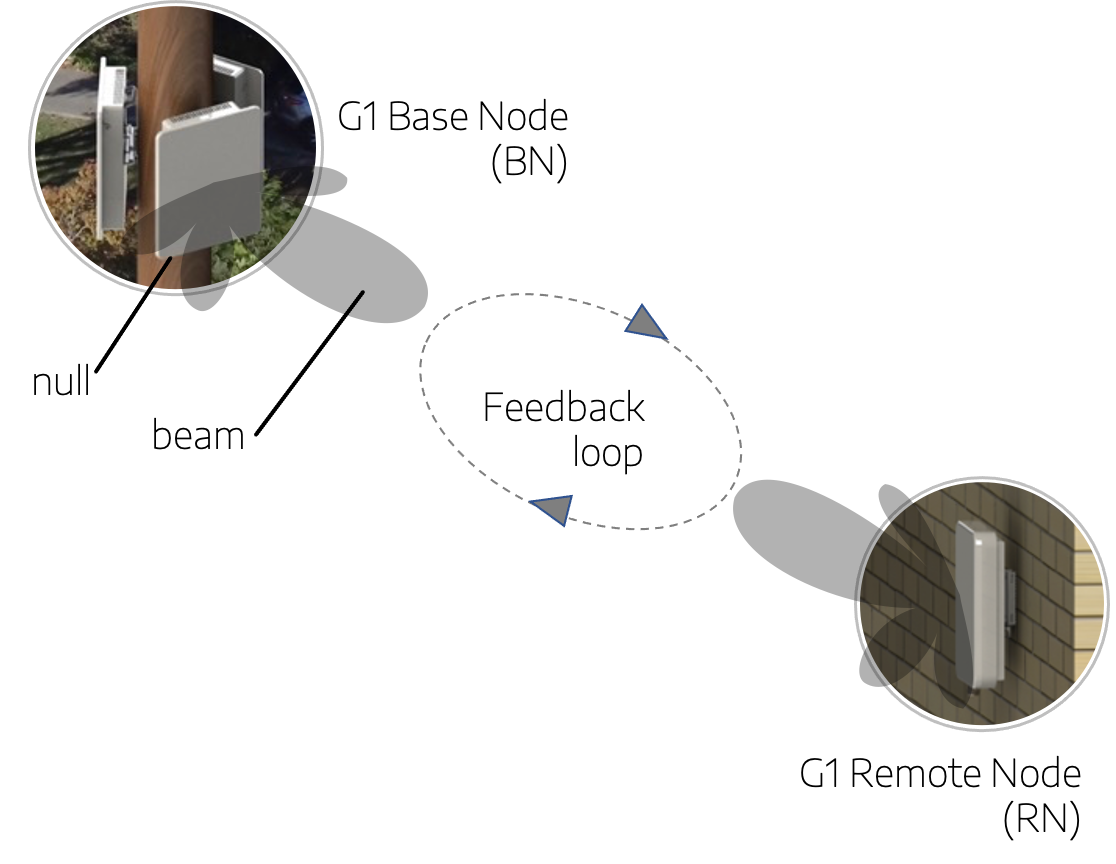If you’ve been reading about the Tarana G1 you’ve probably heard the term “beamforming” used. It’s a relatively simple concept that’s tough to do right. But when it works well, it allows links to achieve performance beyond what non-beamforming, or even more simplistic forms of beamforming, can do.
Put simply, beamforming is a technique in which an RF signal is focused into a beam in a specific direction. This focusing effect puts the majority of the RF energy where you most want it, i.e., in the direction of the other device. This is different from an omnidirectional signal. Think of an omnidirectional signal like a balloon filled with water. When the balloon is resting in the palm of your hand it’s a roughly ovoid shape. This is similar to the shape of an omnidirectional signal. Now take the balloon and squeeze it from one end. The water is squeezed out in the opposite direction, distorting the shape of the balloon. This is similar to what happens with a directional signal from an antenna. Just like with RF, most of the water (or the main RF lobe as it’s called) goes in a particular direction, but not all. It’s not a perfect process but it can redirect most of the energy. By focusing the RF energy, you get a stronger signal further than it would otherwise go.
There are several ways to create a directional signal. One way is with a fixed directional antenna. This is capable of creating a beam although, as the name suggests, the beam is only in one fixed direction. If the other side of the link is moved or a better path is available, the directional antenna cannot change the alignment of the beam. The only way to do so is to physically realign the antenna to point in a new direction. A directional antenna can work well in simple environments where little is likely to change and where a technician is able to do precise alignment. This assumes nothing happens to the antenna, like sagging, getting knocked out of alignment, or a new obstruction blocking the link.
Dynamic, or digital beamforming, is a different way of generating a directional signal. Rather than using a fixed antenna, an array of antenna elements is used. The device can choose the antennas that create the best directional beam to the device. This has the advantage of being able to change if a better path to the other device is available by selecting different antenna paths. Because it has a wider range of options, a digital beamforming device typically doesn’t require quite as precise alignment as a fixed directional antenna.
Beamforming can be done in transmit (Tx) or receive (Rx). It can also be explicit (closed loop) or implicit (open loop). With explicit, both devices (at each end of the link) collaborate with feedback to the other on the best beamforming configuration. With implicit beamforming, only one end of the link is making decisions, i.e. the other device is not giving feedback.

Tarana G1 takes full advantage of digital beamforming with both Tx and Rx beamforming using explicit closed loop feedback. It computes the best beamforming solution on a per subcarrier basis, with a very granular, high resolution scheme over space, time, and frequency. The result is minimal fading of the signal, long range, and high throughput. Exactly what both operators and their customers are looking for in broadband wireless access.
If you just can’t wait to learn more, check out our other blogs or some of our favorite customer links. Or reach out to us at info@taranawireless.com. We’d love to hear from you.


